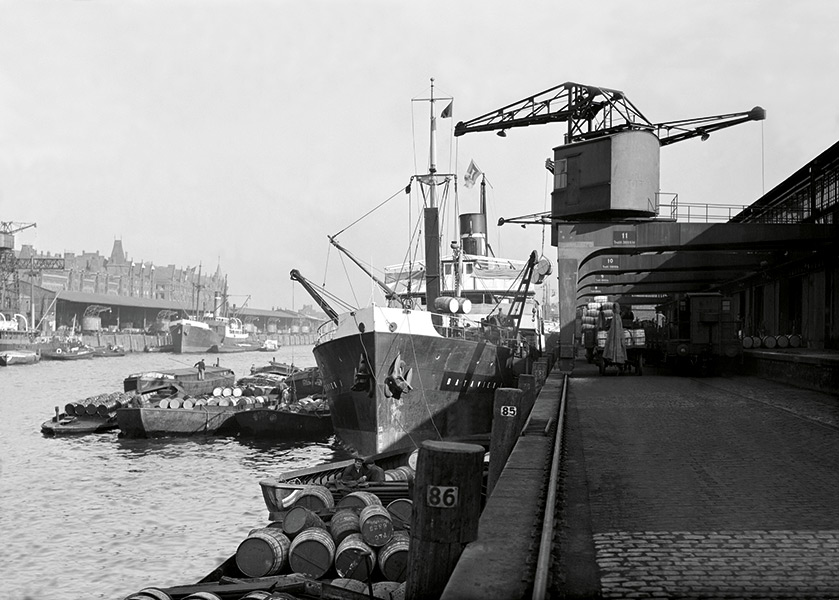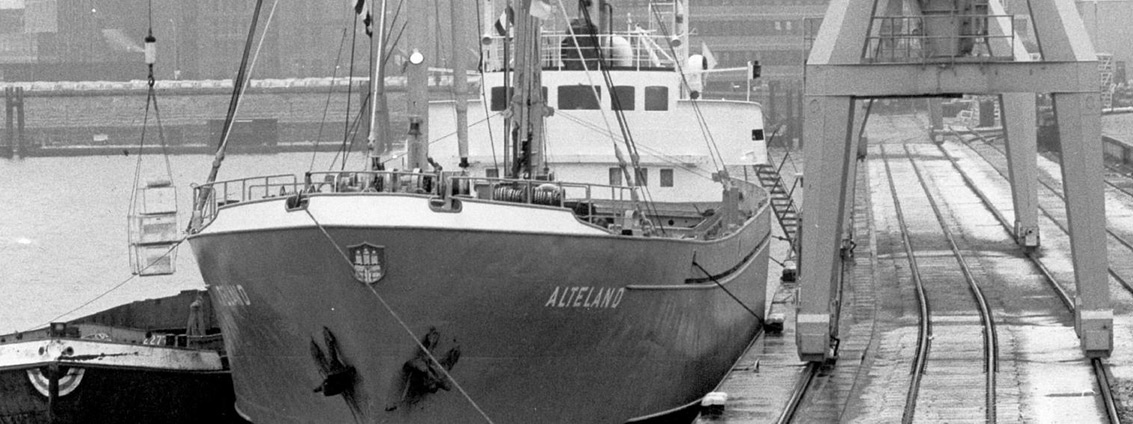History
The beginnings
1901
 On 27 June 1901 79 shipowners gathered in the conference room of the Hamburg Chamber of Commerce to embark on a completely new venture. They were there to set up the first association in Germany that aimed to provide self-help for a profession in the form of legal protection in the settlement of disputes arising out charterparties. Precedents in similar form existed only in Great Britain, where »Protection and Indemnity Clubs« (P&I-Clubs) as legal liability insurers often offered members a »Freight, Demurrage and Defence Class« that amounted to legal protection. Innumerable German shipowners were foreign members of these and desired a similar organisation that would inter alia be German-speaking.
On 27 June 1901 79 shipowners gathered in the conference room of the Hamburg Chamber of Commerce to embark on a completely new venture. They were there to set up the first association in Germany that aimed to provide self-help for a profession in the form of legal protection in the settlement of disputes arising out charterparties. Precedents in similar form existed only in Great Britain, where »Protection and Indemnity Clubs« (P&I-Clubs) as legal liability insurers often offered members a »Freight, Demurrage and Defence Class« that amounted to legal protection. Innumerable German shipowners were foreign members of these and desired a similar organisation that would inter alia be German-speaking.
In 1901, the association’s first year, 79 shipping companies registered their need for precautionary protection in respect of 242 steamships and 127 sailing ships totalling 497,054 grt. In the first part-year 43 disputes arising from freight contracts needed to be investigated, resolved or fought. At 710,175 grt, tonnage insured by the association in 1906 reached a peak not attained again until 1924. With a fleet totalling 573,343 grt, shortly before the outbreak of war in 1914 the membership was almost as in 1901.
1918
After the First World War and the Versailles peace treaty all that remained of the German merchant marine was 673,000 grt of small and very small craft. With 442 ships owned by 107 members, the association represented almost half of all surviving German tonnage in virtually all disputes. Within the first 25 years (1926) the association had opened files on over 6,000 disputed cases.
1933
After years of difficulties for the economy by 1933 there were no more than 103 members. Under the Hitler regime the shipping industry encountered increasing supervision by party institutions. The »Reich Commissioner for Ocean Shipping« endeavoured to gain influence and appointments to the board of the association formally had to be sanctioned by the authorities. In 1936 membership of the association reached its lowest at just 314 ships. The association had quite enough to do even after the outbreak of the Second World War, for it was still interpreting freight contracts amid the confusions of war and championing shipowners’ rights against arbitrary orders from »German Navy command posts«.
1946
In 1946 the military government gave permission for continuation of the association because it had been in existence prior to 1933. The conditions for the new start, however, proved to be extremely difficult. After mandatory handovers the amount of tonnage remaining to German shipowners - 442,138 grt - was one third less than in 1919. At the end of 1948 altogether 129 members with 124 ships (abt. 62,000 grt) were insured.
 The reconstruction of the German merchant fleet made only painstaking progress and foreign vessels on time charters had to help out. The Allies permitted construction of German coastal tonnage from April 1949, but it was not until 1951 that building of deep-sea vessels was permitted without any restrictions. A new category was therefore introduced, the »personal membership« for shipowners temporarily without tonnage of their own. Furthermore a large number of small coastal vessels entered the association. They were also represented on the board.
The reconstruction of the German merchant fleet made only painstaking progress and foreign vessels on time charters had to help out. The Allies permitted construction of German coastal tonnage from April 1949, but it was not until 1951 that building of deep-sea vessels was permitted without any restrictions. A new category was therefore introduced, the »personal membership« for shipowners temporarily without tonnage of their own. Furthermore a large number of small coastal vessels entered the association. They were also represented on the board.
25 important years of solid growth for the association followed. In 1964 the magic »400« mark was exceeded with 410 ships (and 580,063 grt) and in 1973 the association became a »tonnage millionaire«.
In the middle of the 1980s the number of disputes in the "time charter" category began to exceed voyage charter disputes - a consequence of the large number of containerships on time charter. From the beginning of 1988 a change in the rules allowed German ships managed abroad to be insured by the association.
Since 2000
Following a further amendment of the statues in 2023, ship managers can also become members of the association and register the ships they manage.
In their global activities, members of the association have access to a worldwide network of trusted agents and specialized lawyers in the mort important port cities.
To date (September 2025) the association has insured 872 vessels.